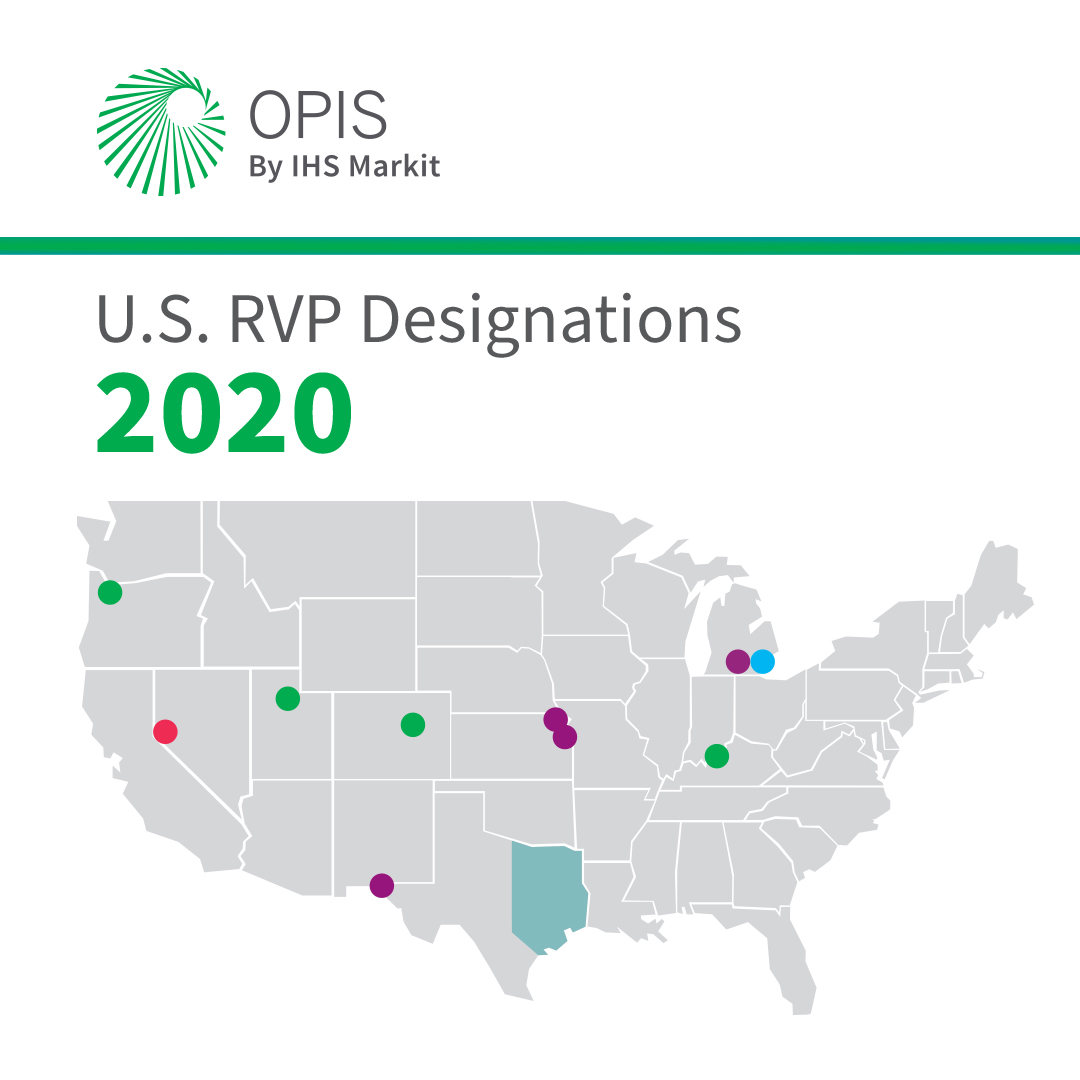Gasoline Price Volatility and the 2020 RVP Season
Despite major fuel market disruptions caused by the coronavirus, summer gasoline season still approaches.
RVP, or Reid Vapor Pressure, measures gasoline pressure and is mandated to specific levels by state and local governments as an ozone-control mechanism.
While there is definite murkiness to the overall market in 2020, an understanding of RVP is helpful to clarifying a framework for the future.
In warmer months, RVP levels must be lower than when it’s cold outside. In late winter/early spring each year, U.S. spot gasoline markets start to ramp down RVP with the chain reaction then rippling to OPIS rack reports.
Things are decidedly different this year:
- Several states have issued waivers postponing the sale of low-RVP gasoline at the terminal, allowing suppliers more time to unload high-RVP barrels.
- Due to EPA waivers, we may see a delay in moving price designations to reflect a lower RVP. OPIS will reflect low-RVP product codes at the rack as suppliers start to send out those prices.
Download this free infographic to see when, where and how OPIS is handing RVP changes in 2020.
Here’s Why It’s Important to Stay on Top of RVP: Gas Price Volatility
As 9.0-lb RVP-and-lower levels take center stage, spot gasoline prices can bounce around. And in this volatile gasoline price climate, amid the coronavirus, it’s more important than ever to stay on top of price moves.
Remember our price influence chain….
Refiners increase or decrease their daily rack costs based on the average daily change in their spot replacement cost, a value they calculate based on changes in the spot market.
The market will, of course, transition up again in the fall. And you’ll be able to keep track of all the changes in your OPIS Rack Report. If you aren’t already subscribed to OPIS Racks, learn more about OPIS rack pricing or click below for a free demo.


